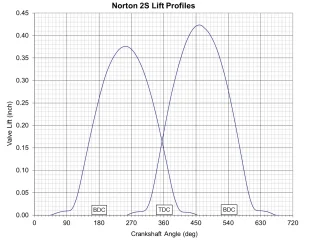Fast Eddie
VIP MEMBER
- Joined
- Oct 4, 2013
- Messages
- 21,908
I don’t know.Is it likely that both exhaust lobes could wear that much with the inlet lobes wearing virtually not at all?
It’s a possibility, ie someone could have shimmed up the exhaust springs too hard.
Another possibility is its a different cam, based on a 2S but slightly different.
But, if this is actually a Combat, and it doesn’t look like it’s been messed with too much, then I think I might be inclined to assume that your measurements indicate it is a 2S. I don’t have experience measuring them, but would not be surprised if a little manufacturing ‘tolerance’ plus a little wear, could equal the difference you see.
Whatever the real issue, I would suggest that your cam measures up close enough to work, so as ILLF8ED suggested, maybe your focus should now be on the timing.
With that you enter another world of debate re the best method! But IMHO opening and closing points are the worst. Lift @ TDC or lobe centre are better.


